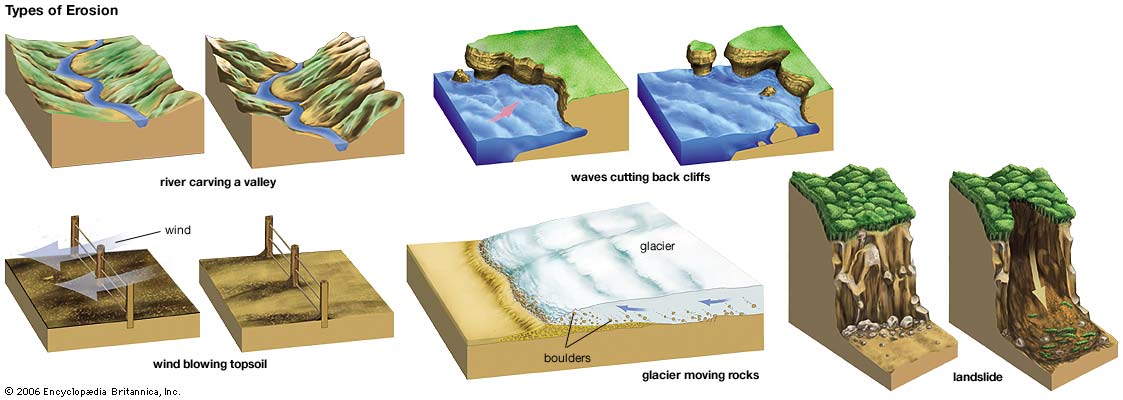Local geology:
A Physiographic Region is a region of which all parts are similar in geologic structure and climate and which has consequently had a unified geomorphic history; a region whose patterns of relief features or landforms differs significantly from that of adjacent regions. Arkansas River & Wellington-McPherson Lowlands is a Physiographic Region unique to its own, and found almost entirely in Kansas. Arkansas City Kansas seats right in the middle of the valley of this Physiographic Region. And to compound the flood risk it seats with the Arkansas River on one side and the Walnut River on the other side. The Arkansas River Lowlands is made up of rocks deposited by the Arkansas River during the last 10 million years as the river flowed through Kansas from its source high in the Rocky Mountains. In the Rockies, the Arkansas is supplied with runoff, snowmelt, and rock debris that weathers from the mountains, but as it moves out onto the High Plains, it receives little in the way of additional water. In fact, it loses water to its sandy riverbed. As its flow decreases, the river's ability to carry sediments also diminishes and it begins to dump its sediment load. It changes from a degrading stream (one that cuts downward in its channel) to an aggrading stream (one that builds up the riverbed).

The Arkansas River generally flows to the east and southeast as it traverses the US states of Colorado, Kansas, Oklahoma, and Arkansas. The river's initial basin starts in the Western United States in Colorado, specifically the Arkansas River Valley, where the headwaters derive from the snowpack in the Collegiate Peaks. Then it flows east into the Midwest via Kansas, and finally into the South through Oklahoma and Arkansas. It travels 1,469 miles from start to end, and flows right next to Arkansas City Kansas.

Erosion
Erosion is the process by which soil and rock are removed from the Earth's surface by natural processes such as wind or water flow, and then transported and deposited in other locations. In this particular area at GZ, Water has caused most of the Erosion here.
Types of Erosion:
Splash Erosion: Small soil particles are detached and sent airborne through the impact of raindrops on soil.
Sheet Erosion: Raindrops break apart the soil structure and it's moved down-slope by water that flows overland as a sheet rather than definitive channels. This occurs frequently during cloud bursts.
Rill Erosion: This process develops small, short-lived, concentrated flow paths. These paths create a sediment source and delivery system for hill-slope erosion. Areas where precipitation rates exceed soil infiltration rates are more prone to this type of erosion.
Gully Erosion: Water flows in narrow channels during or directly following heavy rains or melting snow. The gullies can erode to considerable depths.
Valley or Stream Erosion: Continual water flow alongside land (along a linear feature) creates this type of erosion. It extends downward, deepening a valley, and head-ward, extending the valley into the hillside. This occurs most frequently in times of flooding.
Bank Erosion: Over time, banks of rivers and streams are naturally worn down.
Freezing and thawing: Cold weather causes water trapped in tiny rock cracks to freeze and expand, breaking the rock into several pieces.
Wind erosion is a major geomorphological force, especially in arid and semi-arid regions. Wind erosion is of two primary varieties: deflation, where the wind picks up and carries away loose particles; and abrasion, where surfaces are worn down as they are struck by airborne particles carried by wind.
Mass movement is the downward and outward movement of rock and sediments on a sloped surface, mainly due to the force of gravity. Mass movement is an important part of the erosional process, and is often the first stage in the breakdown and transport of weathered materials in mountainous areas. It moves material from higher elevations to lower elevations where other eroding agents such as streams and glaciers can then pick up the material and move it to even lower elevations. Mass-movement processes are always occurring continuously on all slopes; some mass-movement processes act very slowly; others occur very suddenly, often with disastrous results.

Source: (water)
Sources
**Logging requirements**
DO NOT POST ANSWERS IN YOUR LOG.
Send the following answers to me via email.
- The text "GC5F6EQ City prone to flood" on the first line
- What manmade structure helps against floods here?
- How high is the Structure?
- What is not allowed, and how could that be a problem for the structure?
At waypoint “Crossing” (DO NOT STOP ON THIS ROAD AS YOU CROSS)
- What can be installed here?
At waypoint “Stop”
- What is the distance to waypoint “crossing”?
| I have earned GSA's highest level: |
 |